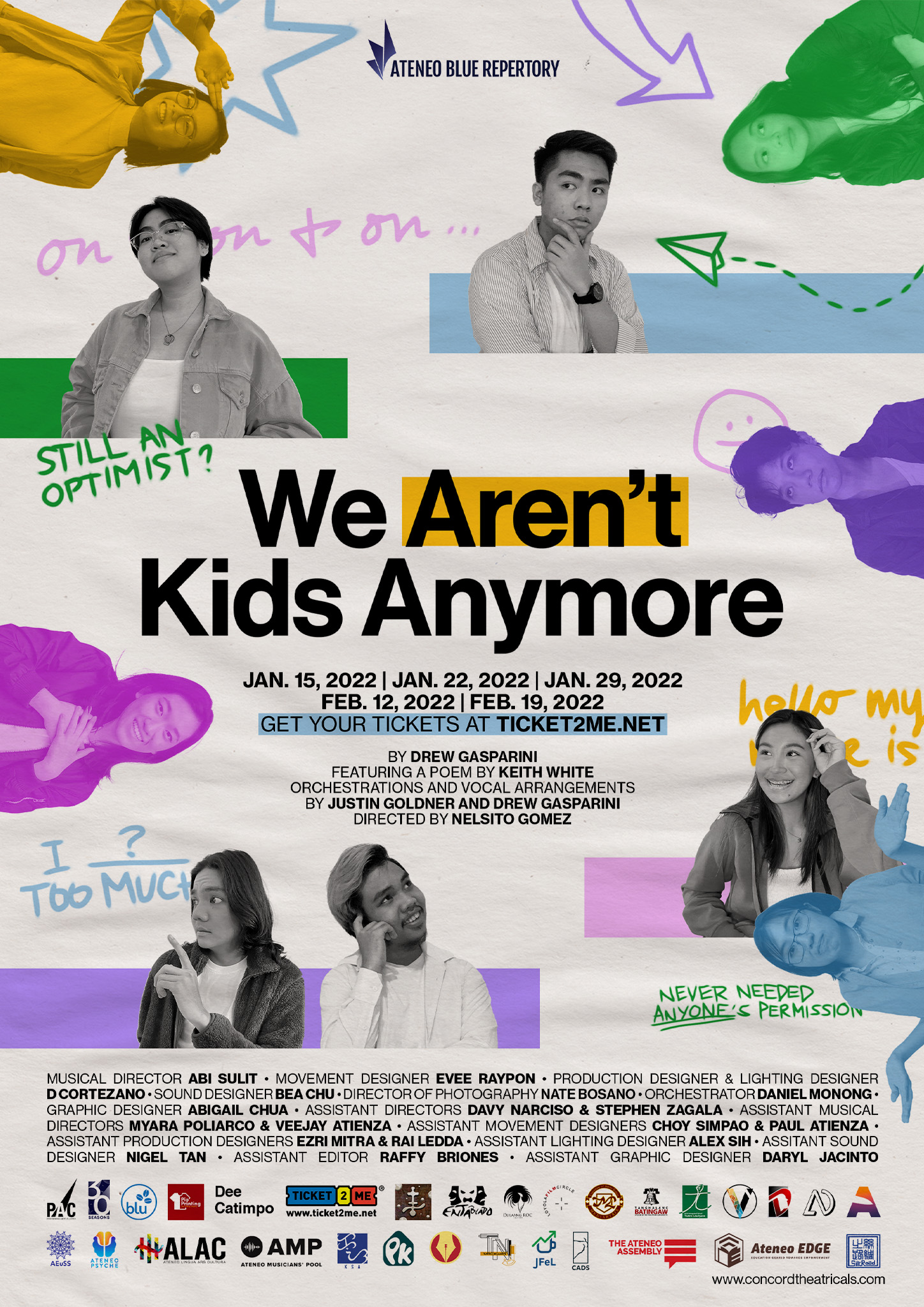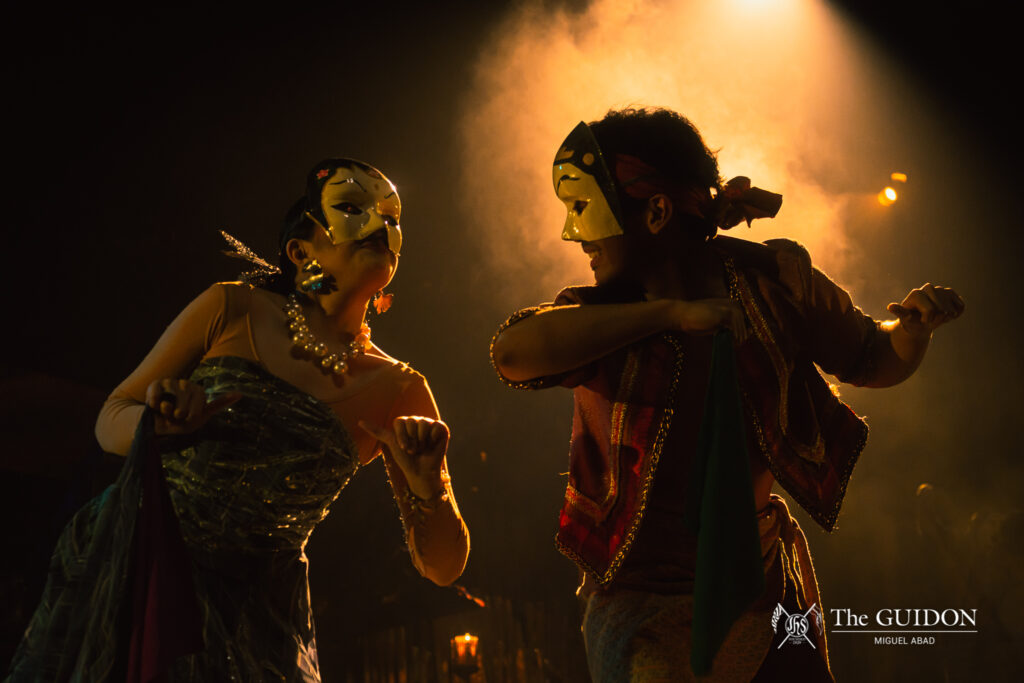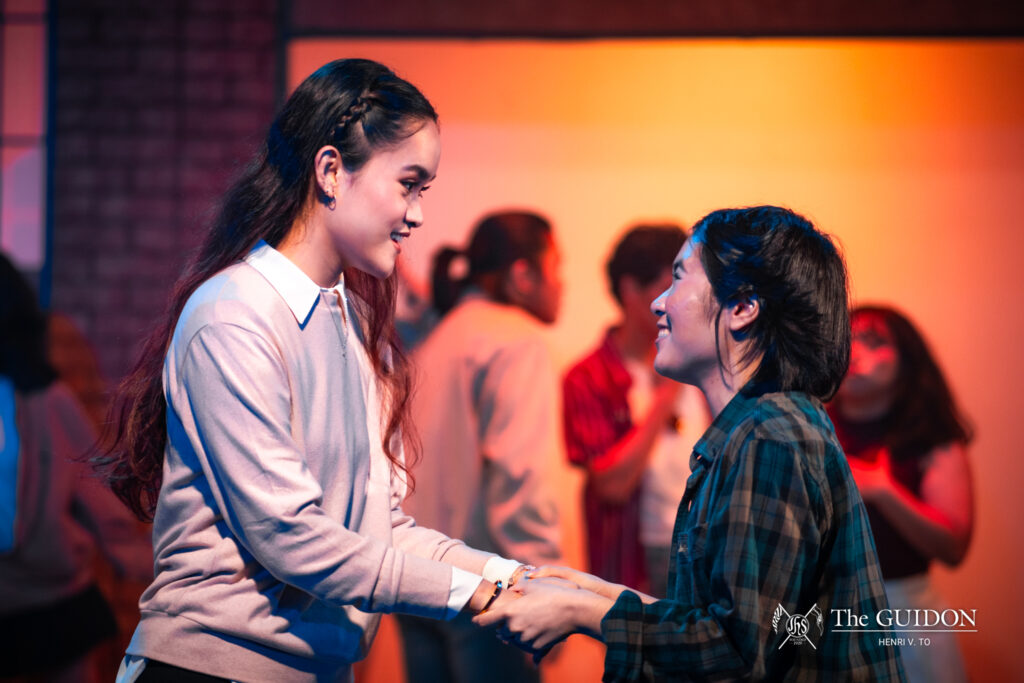“What can you do when you’re tossed in the middle of this so-called normal with the little you know?” the cast sings on the titular number, “We Aren’t Kids Anymore.” Experiencing the transition from childhood to adulthood in a global pandemic is hardly normal—and lockdown has done nothing but aggravate these growing pains.
To embrace the frustrating online world instead of escaping it, Ateneo Blue Repertory’s staging of We Aren’t Kids Anymore (WAKA) empathizes with its audience by casting a magnifying glass into an artist collectives’ unique stories. Under Nelsito Gomez’s direction, Drew Gasparini’s writing is aptly recontextualized into our current reality, thus giving viewers permission to grieve what they’ve lost over the past two years.
Holding up a black mirror
WAKA reflects the heartache that accompanies coming-of-age in a pandemic by featuring a group of artists grappling with loss in one way or another. From the end of a relationship to the passing of a family member, we see how they process such traumas through their art.
The opening number “Hello, My Name Is Drew” establishes the production’s primary setting in a “Schwoom” room that’s utilized for Artists Anonymous meetings. Although it primarily serves as a safe space for creatives to share their work, the room also doubles as WAKA’s stage. The characters interact through the room’s chat feature, while expressing themselves through Gasparini’s songs.
The visual identity of WAKA is preserved by Production and Lighting Designer D Cortezano, who keeps it consistent within and beyond the Schwoom room. This is particularly impressive on “I’m Not Falling For That,” which features a flashback of Nico (Nico Bermoy) and Carlo (Carlo Dano) fighting prior to the pandemic. Though the actors shot at different locations, the set design is convincing enough to make the space look unified.
Gasparini’s writing shines through the cast’s individual personalities. Each of them go by their own names—a touch that makes the production more authentic. Each character deals with the impact of the pandemic in their own way while attempting to hone their artistic skills, and they air the grievances brought about by their turbulent situation during Artists Anonymous meetings.
For instance, cast members Bea Nunag and Bri Caranto’s rendition of “On and On and On” perfectly encompasses the disillusionment that accompanies burnout from pursuing a creative career. Nunag looks as though she’s on the verge of tears the entire performance as she mourns the loss of her hopeful and bright-eyed younger self.
Although major life events transpire online due to the pandemic, it’s evident that they still heavily impact the characters. The characters are unafraid to show the depth of their emotions: They know they smile, cry, and care too much, and these feelings are conveyed through the cast’s soulful performances. In “Something Good,” a song about the deterioration of a relationship, Nico Bermoy calls out Carlo Dano, his clearly disinterested boyfriend. Nico’s attempt to bare his heart is met with Carlo’s eye rolls, making it uncomfortable to watch.
These emotionally charged performances shine under the musical direction of Abi Sulit and the orchestration of Daniel Monong. Stripped down numbers such as “I Wish I Never Met You” and “Snow” emphasize the performers’ vocal abilities, while upbeat songs “Faking Cool” and “What The Hell Am I Doing With My Life” blend the instrumentals and the casts’ voices seamlessly. Sound Designer Bea Chu brings these elements together and keeps the audio quality consistent throughout the production’s 19 songs.
To elevate these musical performances, Movement Designer Evee Raypon through her choreography, which is particularly striking in “Caught In A Loop,” the only number with dance at the forefront. The delicate choreography—which is performed by Martha Montemayor, Julianne Go, Carlo Dano, and Issa Iyog—perfectly compliments Gasparini’s lyrics. In Schwoom room performances, the characters’ movements are reminiscent of an extroverted friend telling a story—full of enthusiastic hand gestures and bursts of energy. In “The Thing I Love The Most About New York,” and “What The Hell Am I Doing With My Life?” these actions fill the screen without overshadowing the performances’ musical aspect.
Fragmented images of an artist’s life
While WAKA succeeds in utilizing elements from the online setting to showcase coming-of-age turmoil, embracing the online setting has its limitations. We are given only a glimpse into the characters’ lives through the Artists Anonymous meetings coupled with flashbacks. With a narrative spanning two years squeezed into a running time of an hour and a half, the story could still explore the characters’ contexts better beyond their extreme highs and lows.
Nonetheless, it can be said that the characters’ limited storylines mirror the disconnect in the online setting—a quick video call with our loved ones is hardly enough time to comprehend what they’ve been going through. For instance, Lyle Viray’s character agonizes over his breakup and is left incapable of sharing his work during meetings. It is only when he finally performs a heart-wrenching poem penned by Keith White that the rest of the characters—along with the audience—realize the gravity of his heartbreak. As Lyle speaks of suffering in silence and wanting to bleed out, it becomes evident that WAKA doesn’t shy away from showing characters at their most vulnerable.
Another standout performance is “Mom Could Play Guitar,” in which Kurt Fronda’s character grieves his mother during her online wake. The song intercuts between the Schwoom call and flashbacks to Kurt’s memories, fully immersing the audience in Kurt’s pain.
Director of Photography Nate Bosano makes these performances even more poignant by piecing these fragments together through fitting post-production. He keeps the Schwoom room engaging and provides much-needed context by intercutting news clips, animations, scrapbook-style images, and flashbacks with performances. The production is hardly ever stagnant with each number almost mimicking a series of music videos.
The past two years may have felt like a drag at best, but this achingly relatable production acts as a reminder that just “getting by” isn’t a bad thing. Whether you’re faking cool or caught up in a loop, WAKA is equal parts validating and reassuring.
The show concludes on a cautiously optimistic note with “When I Go.” Despite being jaded by all that they’ve endured, these artists remain hellbent on creating. The cast sings “Even when it’s over, I’m leaving something when I go” with fervent conviction as they look towards the future.






